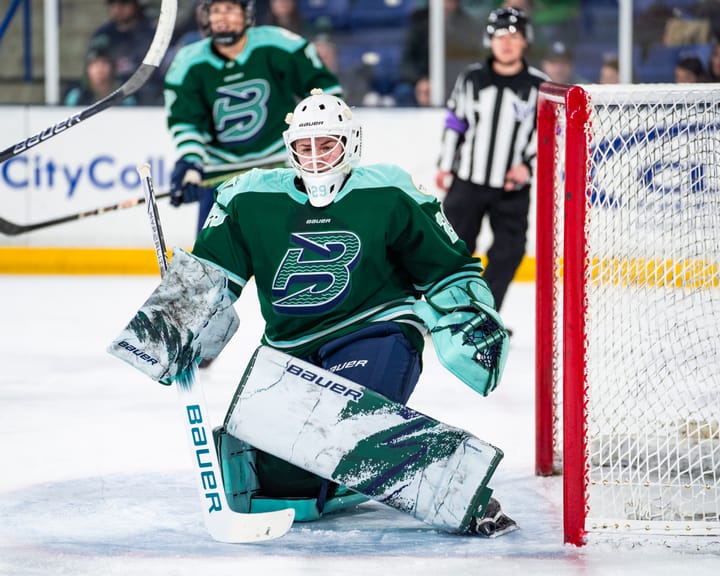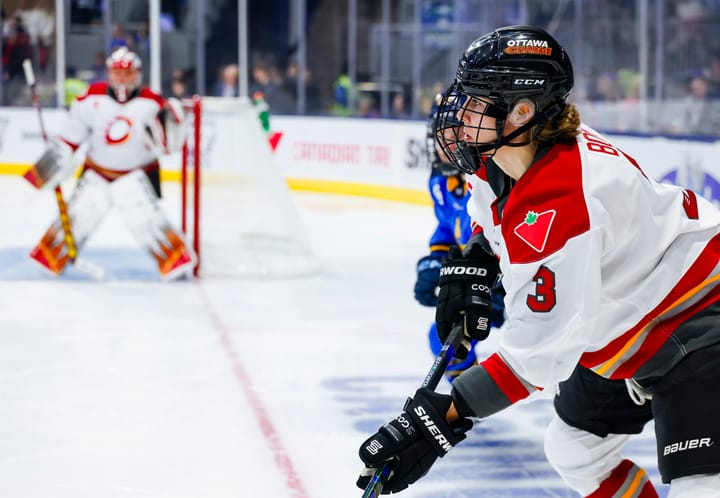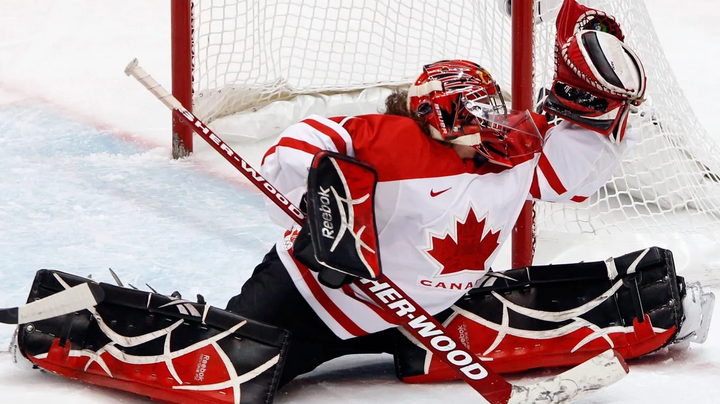Editorial: Foresight, communication, clarity: what the NWHL must still work on in seasons to come
Interim Commissioner Ty Tumminia counts the season in Lake Placid as a success — but does that mean anything in the wake of so many stumbles?
Being an NWHL reporter from Year One, Day One, it’s easy to get caught up in how things used to be. Back when you got just the access you got and no more, when sometimes interviews had to be conducted alongside fan meet-and-greets, when broadcast streams failed and had to be supplemented with shaky Periscope or Instagram Live feeds. It was nearly as difficult for media as it was for players, trying to grow the game and its coverage from the grassroots upward to something bigger. When you shift gears from that to slick production, shiny graphics, and guaranteed media availability, it can be a bit of a shock to the system to see just how far the NWHL has come.
That doesn’t excuse the missteps the league has taken in terms of providing clear and timely information during its ill-fated run in Lake Placid. With every sponsor that was announced and every press conference that was virtually held, there were still so many questions left unanswered about COVID-19 protocol, about taxi squads, and EBUGs. About how everyone from the players on the ice to the equipment managers in the room were being kept safe. Quarantines, test results, even whether or not you could call this a true bubble — all of that was up in the air. And as more heads turned to watch, more fell through the cracks — and not everything was caught in the end. Moreover, there seemed to be some severe disconnect between what interim commissioner Ty Tumminia thought we knew and what we actually did know.
In the end, the NWHL absolutely did the right thing to take care of its players’ health and safety and pull out of the rest of the season. Of course, losing the opportunity to be seen on a national platform is a punch to the gut. Of course, having to put everything on pause now, when possibly more people than ever know your brand and your product — when we’ve seen probably some of the best hockey in six seasons — is a horse-sized pill to swallow.
But it also raises the question: if we had the foresight and the knowledge to be able to tell how difficult fully quarantining players and establishing a true bubble would be ... why even take the risk? Why expose your players to a virus with so much changing information behind it, so much mystery?
That’s not to say everything was a colossal failure — to say that would be to discredit the tremendous work of so many. The deal with NBC, the multiple sponsors, the thousands of new viewers-turned-fans on Twitch — that is all a net positive, one I’m hoping has a prolonged effect. I can imagine that’s what Tumminia was thinking about when she spoke to the season in Lake Placid being a “success.”
Related
Transcript: NWHL media availability on the suspension of the 2021 season
But that success may come at a serious cost to those who risked their health to be a part of it. While I know Tumminia et al want to make sure they’re on the right side of the PR line and paint a rosy picture, there’s a way to toe that line and be realistic, while also optimistic.
I know every single player who stepped onto that ice at Herb Brooks Arena just wanted one thing: to play the sport they live for. Just like every single media member I spoke with beforehand wanted to watch and see how the season would play out. We had our stats and storylines, and perhaps some not-so-latent trepidation over how exactly the league would pull this off. That trepidation slowly grew as we saw players missing from the rosters, as we saw teams become depleted and then drop out. And the grimmer things began to look, the more confusion mounted as to just what was going on in Lake Placid and why the league was being so quiet about it. (For more information on that timeline, check out Casey Bryant’s piece.)
The problem with this is that fans look to us, the media, for information as much as they look to the league. It’s quite simple: the less we know, the less we can do our jobs — and while part of that job is to “aid in [the league’s] success,” as Tumminia put it, it’s nowhere near the biggest part. That’s dedicated to reporting the facts as they come — good or bad. That’s what many of us went to school for, and it’s what we aim to do every time we raise our virtual hands to ask a question. If I can’t do that, I’m going to start asking myself just what I’m doing here. And if the league was not prepared to handle that, then I have to ask what they thought was going to happen in this kind of situation.
Ultimately, I’m hoping the NWHL takes this time to really focus on what they need to — getting their players healthy and safe, and also putting together a much better communications group than what they have currently. Quite frankly, the future success of the league depends on it. I believe Tumminia, Anya Packer, and those committed to long-term progress understand that. Now it’s up to them to truly put their words to work and push the league where it needs to go.





Comments ()